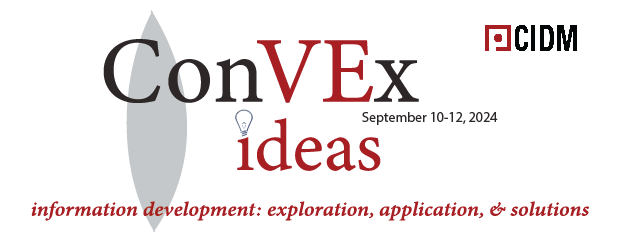You Write for Users Not Readers! So know your users…
Presentation Abstract
The majority of information developers create technical documentation through the following cycle: Talk to the subject matter expert, usually a product manager, marketing/business analyst, solution analyst, developer, tester or refer to the information created or stored by one of these experts; create the outline; get it reviewed and approved from these folks; start documenting; again get it reviewed by these experts; publish the document; move on to the next release requirements!
Did we miss the “user” in the entire cycle??
Is it not strange that we create a USER DOCUMENT without the user in the picture?
This session delves into user analysis techniques, collecting user details through the limited avenues (because not all can be at the user’s site!), building knowledge to understand the user, creating user-centered documentation, delivering user-centered documentation and more.
Be it a legacy documentation library that is still printed or the new age DITA based library, user analysis is the key. I will share a few techniques that I followed and how they helped me…
What can attendees expect to learn?
Benefits of learning user analysis and implementing…
1. Value for information developers goes up in the organization: Information Developers are not restricted to writing alone but they get to contribute in Usability, UI designing, Testing, User Forums, and the layer of organization that directly deals with the users.
2. Opportunities for writers to broaden their skills: They have more career growth options.
3. Fewer Tech Support calls: Support cost comes down and they contribute to the organizations revenue.
4. Improved user experience: They provide only required information to the users.
5. Improved quality: Product usage and information access is more effective because users can achieve their goals and tasks.
6. Easier Content reuse: Operational cost comes down (there is a significant saving in review time, production time, publishing time, maintenance time,…)
To summarize, after applying what you’ve learned from this session, the audience will be able to make a tangible and intangible impact at their workplace.
Meet the Presenter
 Vijay Kulkarni is the Information Development Manager at Unisys Software, India with 17 years of experience in the field of technical documentation. He has worked on documentation of products spanning across multiple domains like Networking, Storage, ERP, and so on.
Vijay Kulkarni is the Information Development Manager at Unisys Software, India with 17 years of experience in the field of technical documentation. He has worked on documentation of products spanning across multiple domains like Networking, Storage, ERP, and so on.
He has been associated with large and small IT companies like Hewlett Packard, Novell Software, and Everest Software and has worked on various tools ranging from MS-Office to the complex XML based environments. Currently, he is working for Unisys Software and handling the Information Development team. His primary role involves project management, people management, driving initiatives across the ID team and constantly working towards delivering a better user experience. He has worked with global teams across the Americas, Europe, China, S Korea, Japan, and others.
He is a regular speaker at STC India and tcworld (Tekom) India conferences. He follows the latest trends in documentation and strongly believes in knowledge sharing, promoting the technical documentation profession, and its importance across industries.
